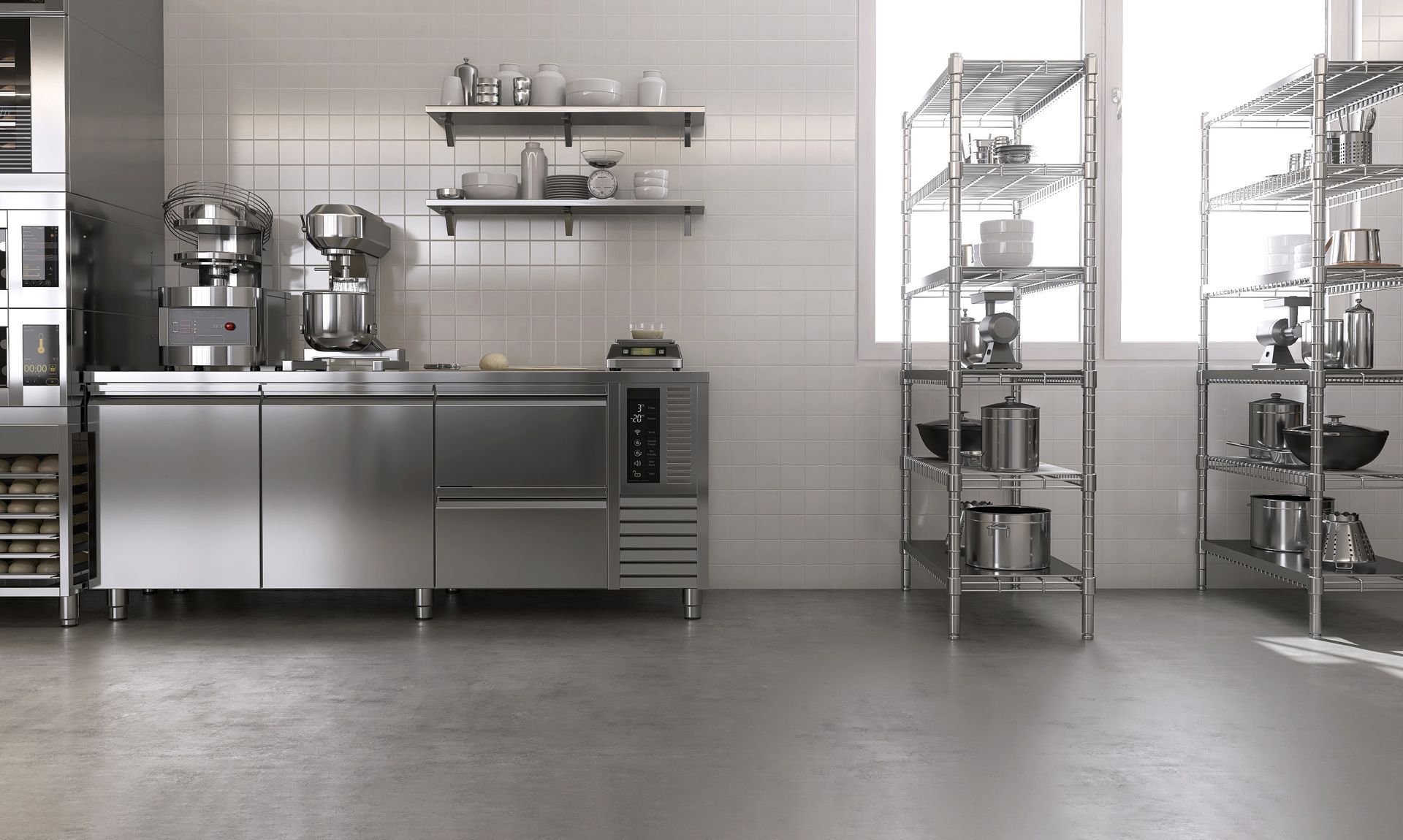Why Indoor Grease Traps Fail More Often in High-Traffic Locations

Indoor grease traps, those smaller units installed under sinks or in the floor, are common in many restaurants, coffee shops and other food service businesses across Atlanta. They’re designed to capture fats, oils and grease (FOG) before it enters the plumbing system, just like their larger in-ground counterparts.
In high-traffic kitchens, these indoor units are more prone to clogging, odor issues and outright failure. How quickly they fill also has a lot to do with employee training and practices.
Failure to use strainers in dishwashing sinks can cause these traps to rapidly fill, and without basic nightly cleaning of the removable solids screen, FOG can quickly overwhelm under-sink traps.
These grease traps can be important tools, but keeping them in proper working order between professional cleanings requires significantly more effort on the part of employees.
Why Indoor Grease Traps Fill Faster
The primary reason indoor units fail more often is simple: size. Most under-sink grease traps hold only a fraction of the volume of an outdoor interceptor. In a high-traffic location, whether it’s a busy coffee shop cranking out lattes all morning or a pizza restaurant with high delivery and carryout volume, this smaller capacity is quickly overwhelmed.
Every sink load of greasy dishwater, every rinse from a sauté pan and every wipe-down of cooking utensils sends more FOG to the trap. With such limited space, even a small surge in kitchen activity can push the unit to capacity. Once FOG and solids exceed about 25% of the trap’s total liquid depth, separation efficiency drops sharply. In busy kitchens, this can happen in days rather than weeks.
Atlanta’s Maintenance Rules Add Pressure
Atlanta’s Department of Watershed Management requires all under-sink grease traps to be cleaned at least once every 14 days, regardless of how full they are. And that’s just the baseline requirement. Many high-traffic kitchens need service even more often to prevent backups. Failing to meet this schedule can lead to clogged lines, unpleasant odors and violations during inspections.
The Impact of Neglect
- Slow Draining Sinks – As solids and grease accumulate, water takes longer to pass through, slowing dishwashing and prep work.
- Foul Odors – Warm indoor environments accelerate the breakdown of organic matter, producing strong smells that can drift into customer ordering, pickup and dining areas.
- FOG Carryover – Once a trap is overloaded, FOG passes straight through to the plumbing or the outdoor interceptor, increasing the risk of downstream clogs and overloading the larger system.
- Emergency Shutdowns – Severe blockages can halt kitchen operations until the trap is cleared, which can be especially damaging during peak service hours.
Why High-Traffic Kitchens Are at Higher Risk
In a high-volume operation, even small mistakes in kitchen maintenance can have serious consequences. Staff rushing during busy shifts may skip scraping plates or draining fry baskets before washing, sending more solids and oil into the trap. Dishwashers may run multiple back-to-back cycles, flooding the trap with warm, emulsified grease that solidifies inside the unit.
Add in the fact that these traps are often located in cramped, inconvenient spots, such as under low sinks, inside cabinets or even under the floor. Grease traps that are harder to reach make nightly strainer basket cleaning and regular inspection more of a hassle, and workers may be inclined to skip it. Out of sight can quickly become out of mind.
Prevention Strategies for Busy Locations
Avoiding indoor grease trap failures in high-traffic kitchens requires a combination of strict maintenance and good kitchen habits:
- Stick to or exceed the 14-day professional cleaning rule. If the trap reaches capacity faster than that, shorten the cycle to weekly service.
- Train staff to scrape and dry-wipe dishes, utensils and pans
before rinsing.
- Install strainers in sinks to catch solids before they enter the trap.
- Log and monitor sediment basket cleanings.
A visible maintenance log near the trap helps keep the schedule front-of-mind and makes it easier to hold employees accountable.
- Coordinate indoor and outdoor trap service. If the outdoor interceptor needs more frequent pumping due to high FOG volume, there’s a good chance the indoor trap does too.
The Cost of Skipping Maintenance
In Atlanta’s regulated environment, failing to clean indoor grease traps can lead to serious consequences. And emergency pumping during a service rush is almost always more expensive (and disruptive) than scheduled cleaning. On top of that, if an overloaded trap causes a line blockage, the downtime can cost more in lost sales than the cleaning ever would have.
Enjoy Dependable Grease Trap Cleaning on a Schedule That Works for Your Business
In high-traffic kitchens, indoor grease traps work harder, fill faster and face a greater risk of failure than large outdoor interceptors.
Sticking to a strict cleaning schedule, training and holding employees accountable and coordinating service with your outdoor system can help keep these traps running smoothly and prevent compliance headaches.
You can schedule regular under-sink or under-floor grease trap cleaning by calling Southern Green Industries at (404) 419-6887. We also provide one-off and emergency cleanings without any contract requirements.
Recent Blog Posts
Contact us Today for a FREE Quote
We are committed to making grease trap cleaning and fryer oil recycling as clean and easy as possible. If you’d like to learn more about our services or get a quote, give us a call at (404) 419-6887.



